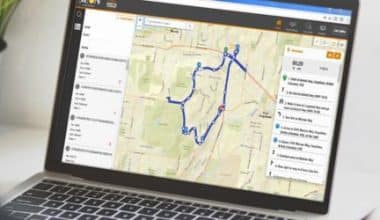Almost all businesses’ daily operations rely heavily on an information management system. These systems handle the numerous data sources that businesses employ to support decision-making, which can lead to their long-term stability. As a result, firms will devote significant resources to information management systems. An understanding of these systems can aid in your understanding of how they might be used to improve various workplace activities. We define information management systems and management information systems in this article, as well as outline their characteristics and types and highlight their benefits.
What Is an Information Management System (IMS)?
An information management system (IMS) is any software architecture that allows for the collection, storage, organisation, and distribution of information. Information management refers to a set of organisational tasks concerned with gathering, storing, and disseminating information to stakeholders. In this context, information refers to any detail that enables a firm to make a decision. For example, the number of sales made by a company in a given week. The data in question can be in a variety of formats, including images, audio, and video. An excellent management system allows information to be accessed in a fast and accurate manner. Thus, allowing important stakeholders to make educated business decisions.
Characteristics Of An Information Management System
In general, an IMS can execute a variety of tasks. These systems’ key features are as follows:
#1. Information collection
This essential component is acquiring and analysing data on business activity. Businesses often collect data in four categories, which are:
- Personal information: Personal data is any information that allows a company to identify a consumer. Name, address, and, in some cases, Social Insurance Number (SIN) are examples of this type of data.
- Data on participation: Engagement data describes the interactions between a client and a company at numerous touch points. For example, the amount of visitors to a company’s website, email openings, and event registrations.
- Behavioural data: In general, behavioural data is any detail containing a transaction between a client and a firm. Purchase history and product usage data are two examples.
- Attitudinal data: Metrics such as product desirability, product relevance, and customer happiness are examples of attitudinal data.
A standard information management system can simply gather, measure, and communicate this type of data to stakeholders.
#2. Data storage
Data storage is a feature that allows the IMS to store data and make it available to users. The system stores this data in a storage device, which can be a hard disc or a server with a database. The system can also store data in the cloud, which is accessible over the Internet. Choosing to keep information in the cloud over more traditional methods of storage, such as paper or compact discs, allows you to better secure the information’s safety, restore it quickly if necessary, and make it internationally accessible.
#3. Information processing
Information processing refers to any series of procedures that produces results. Typically, this entails modifying data in order to provide valuable information. The information must be transformed from one format or medium to another. For example, if a company records total transactions for two days, it can compare the first day’s transactions to the second to see if there was an increase in net revenues. Rather than manually calculating and interpreting this data, an IMS automates the process and merely displays the findings. The acquisition, organisation, display, and diffusion of information are all examples of information processing.
#4. Information distribution
Information distribution refers to all of the processes that an organisation uses to distribute information to its stakeholders. Different stakeholders interact with this information in various ways. Some ensure its quality, accessibility, and utility, but others, such as executives, use it to make decisions.
Information accessibility is defined as an IMS’s capacity to display data in a way that allows stakeholders to access the content. In a company, content is normally available on an equal basis, although this can be changed based on different stakeholder types. For example, a top executive’s access to information may differ from that of a marketer, yet all marketers in a department have access to the same information.
The Advantages of an Information Management System
Some of the advantages of an effective information management system are as follows:
- Helps in decision-making: An IMS provides multiple stakeholders with detailed business information that they can utilise to make departmental choices.
- Improves service delivery and efficiency: It is easier to find areas for improvement in business processes when judgements are well-informed. Different teams can then focus their efforts on these areas for improvement, perhaps increasing their productivity and improving the services they provide to clients.
- Helps to achieve business goals: Proper information processing can assist stakeholders in better understanding business goals and identifying areas or possibilities for improvement.
Management Information System (MIS)
A management information system (MIS) is a data-driven field that focuses on organising, analysing, and applying corporate data to influence decisions. An MIS generates frequent reports for every level of management within an organisation, therefore their complexity varies depending on the size of the company. This system can coordinate, control, analyse, and visualise data in order to increase report-generating efficiency and store it in a convenient location. Within an organisational environment, MIS studies often include people, processes, and technology.
MIS Evolution
Management information systems have progressed through several stages, including:
- Mainframes: These were enormous computers that enabled organisations to undertake activities that required large amounts of data processing. They took up entire rooms, used punch cards, and had operators who manually delivered processed data reports to those who requested them.
- Minicomputers: by the development of minicomputers, punch card operations were replaced by data entering via a computer interface. This also enabled larger companies to run computing centres on-premises.
- Personal computers: With the advancement of personal computers, organisations were able to hire MIS specialists. While this was a low-cost and effective method, it required that the information needed for reporting be present on each individual computer because they couldn’t communicate with one another.
- Networks of clients and servers: Employees wanted to convey knowledge quickly and efficiently as technological complexity rose. Client/server networks addressed this issue by allowing numerous computers to connect to a shared network as servers and share data.
- Enterprise computing: High-speed networks and the convergence of information from multiple departments into software platforms were key elements of this period. These software platforms, often known as enterprise software, made it simple for computers to have access to all of a company’s servers, improving the information generating process even further.
- Cloud computing refers to the availability of many services via the internet. It enables users who are not physically present on the premises of an organisation or directly linked to its private network to access its servers.
Types Of Management Information Systems
Management information systems are classified into several categories, the most frequent of which are:
#1. Decision Support Systems
Decision support systems (DSS) primarily support an organization’s decision-making processes by analysing massive volumes of data. Sales figures, predicted income, and other operations-related information such as labour statistics are examples of data categories. People can manually operate a DSS or have it completely automated. Senior executives and higher management are often the users of a company’s DSS because decision-making is their responsibility.
#2. Accounting Information Systems
Accounting information systems (AIS) are systems that gather, store, and process financial and accounting data for decision-makers. An AIS employs theories and practises from computer science, auditing, accounting, and marketing. It helps to assure the accuracy of financial transactions while also informing interested stakeholders. The AIS procedure typically consists of three steps:
- The AIS collects and saves information about an organization’s financial operations.
- This information is provided to decision-makers, and financial statements and managerial reports are prepared.
- It protects the data and makes it simple to process and record.
#3. Marketing Information Systems
A marketing information system collects, processes, and disseminates information regarding a company’s marketing efforts. This information might come from within the organisation or from external competitors, and it is used to inform marketing decisions by stakeholders. Marketing information systems can also track marketing success, assisting marketing directors and company leaders in determining the profitability of marketing operations. This system can also be used in conjunction with other management information systems to assist firms in better understanding their operating circumstances and environment.
#4. Human Resource Management Systems
Human resource management refers to an organization’s strategy to managing its people productively. An HRMS is a software suite that tracks human resource management and related processes throughout an employee’s lifecycle. HR leaders and personnel are the key users of these systems, which are often used to comply with labour and tax rules. Through regular performance reports, an HRMS enables a company to completely understand its personnel and workforce processes.
What is a Customer Information System (CIS)?
A customer information system stores and makes available all customer-related data. It typically connects material and documents to a structured database system that specifies the individual customer, such as a CRM. Organisations may help sales teams sell faster and more efficiently by making essential customer information easily accessible through an intuitive system.
For rapid access to essential client information, effective content management platforms link with the tools that salespeople use every day. This form of link enables clients to travel through the lead-to-order process more quickly and efficiently, with less friction.
How do Information Systems Aid in the Management of Customer Relationships?
Customer relationship management should be facilitated by information systems by delivering a 360-degree customer record that contains not only real-time data from a CRM but also associated content from other information systems such as a content management repository or file store.
Using a content management or customer information platform that aggregates all of this information can save sales teams time and effort spent searching for the information they need to facilitate client interactions. A unified and comprehensive view of the customer throughout the company improves sales processes and drives deeper insights that help uncover more possibilities, increase customer loyalty, and foster stronger relationships.
How Do You Improve Consumer Tracking?
To enable complete customer monitoring and visibility, organisations should evaluate all inbound and outbound customer communications and implement systems to ensure key stakeholders have easy access to this content.
Consumer information platforms that offer sales teams with a complete, reliable perspective of the consumer, including previous conversations, purchase history, and even previous complaints, keep operations operating smoothly and frequently contribute to more pleasant customer experiences.
Organisations can also use AI-augmented intelligent capture solutions to automate incoming messages in order to provide effective customer tracking and ensure consumer requests are actioned fast and consistently.
How do Sales Operations Improve Content Management?
Sales operations are critical in providing users with linked and effective solutions. Customer content is frequently scattered among systems and organisations. Sales operations should take the initiative to integrate this data into customer records in CRM.
Organisations should provide an integrated infrastructure that improves productivity through better-connected people, content, and systems while also providing sales teams with a complete 360-degree customer view. Sales teams may add significant value to their CRM systems through enhanced content management to better fuel processes and improve client interactions by automating repetitive chores while strengthening information governance to avoid risks.
What are the Advantages of Integrating Customer Information Management?
Salespeople use CRM systems to capture, manage, and measure customer interactions, but other content, like as contracts, offer letters, quotations, and bills, provides vital context for client engagement. Sales teams may miss out on account insights that provide a greater customer experience and expose new revenue prospects due to data silos and disconnected systems.
With a content management platform that interfaces with CRM systems and aggregates key customer information where and when sales people need it, organisations can:
- Improve customer satisfaction by assisting sales teams in responding to customer demands as rapidly as possible.
- With real-time access to account-related content across all touchpoints directly from CRM apps, you can shorten sales cycles and close deals faster.
- Allow sales teams to spend more time prospecting and less time scouring systems for account-relevant information.
- Discover new sales chances by increasing visibility and insights into cross-sell and upsell opportunities.
- Marketing Information System: Best Practices & All You Need
- ENTREPRENEUR: What It Means to Be One & How to Start
- INFORMATION SYSTEMS: Definition, Facts, Uses & Examples
- MANAGEMENT INFORMATION SYSTEMS (MIS): Definition and All You Need To Know(Opens in a new browser tab)






